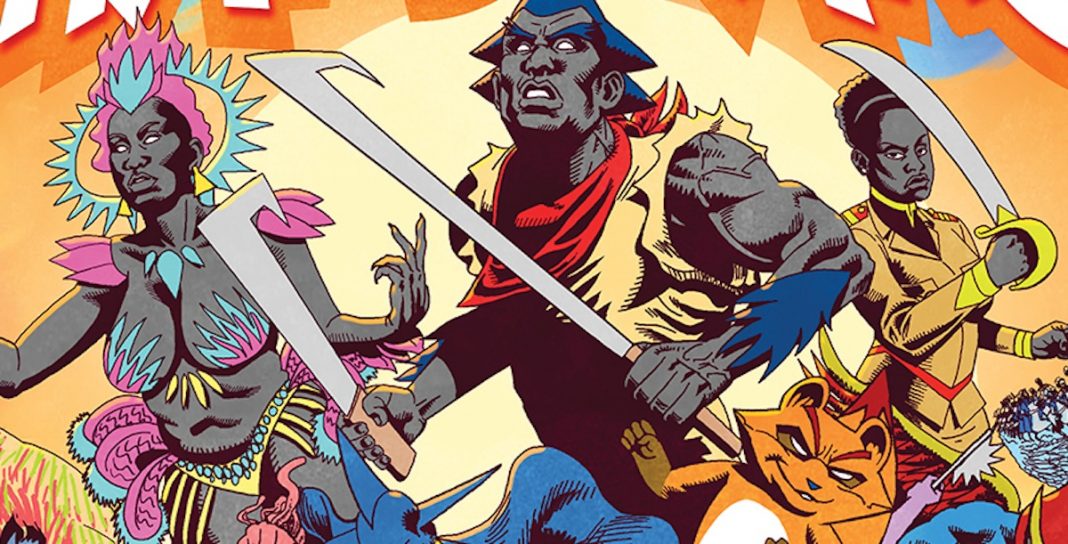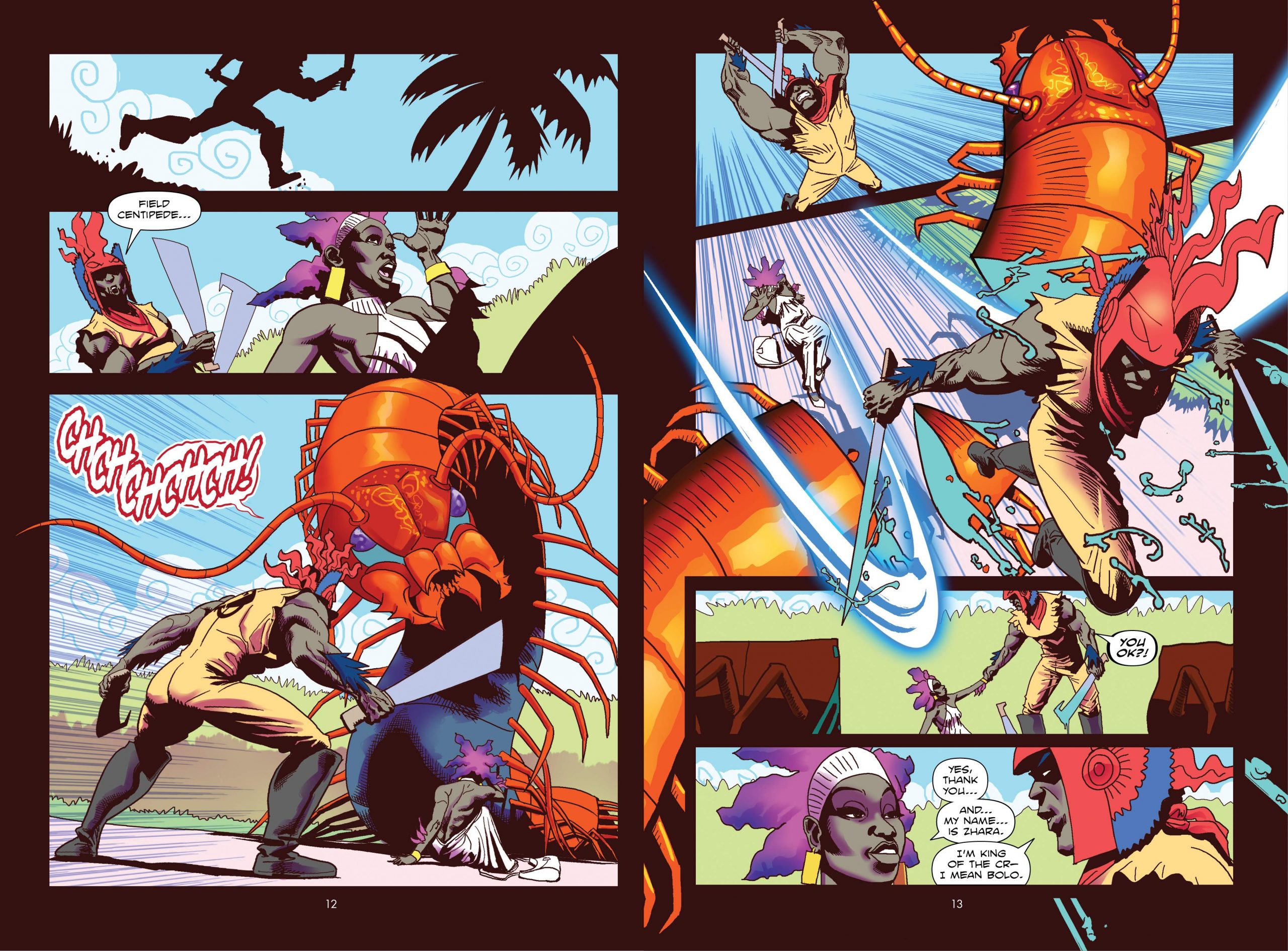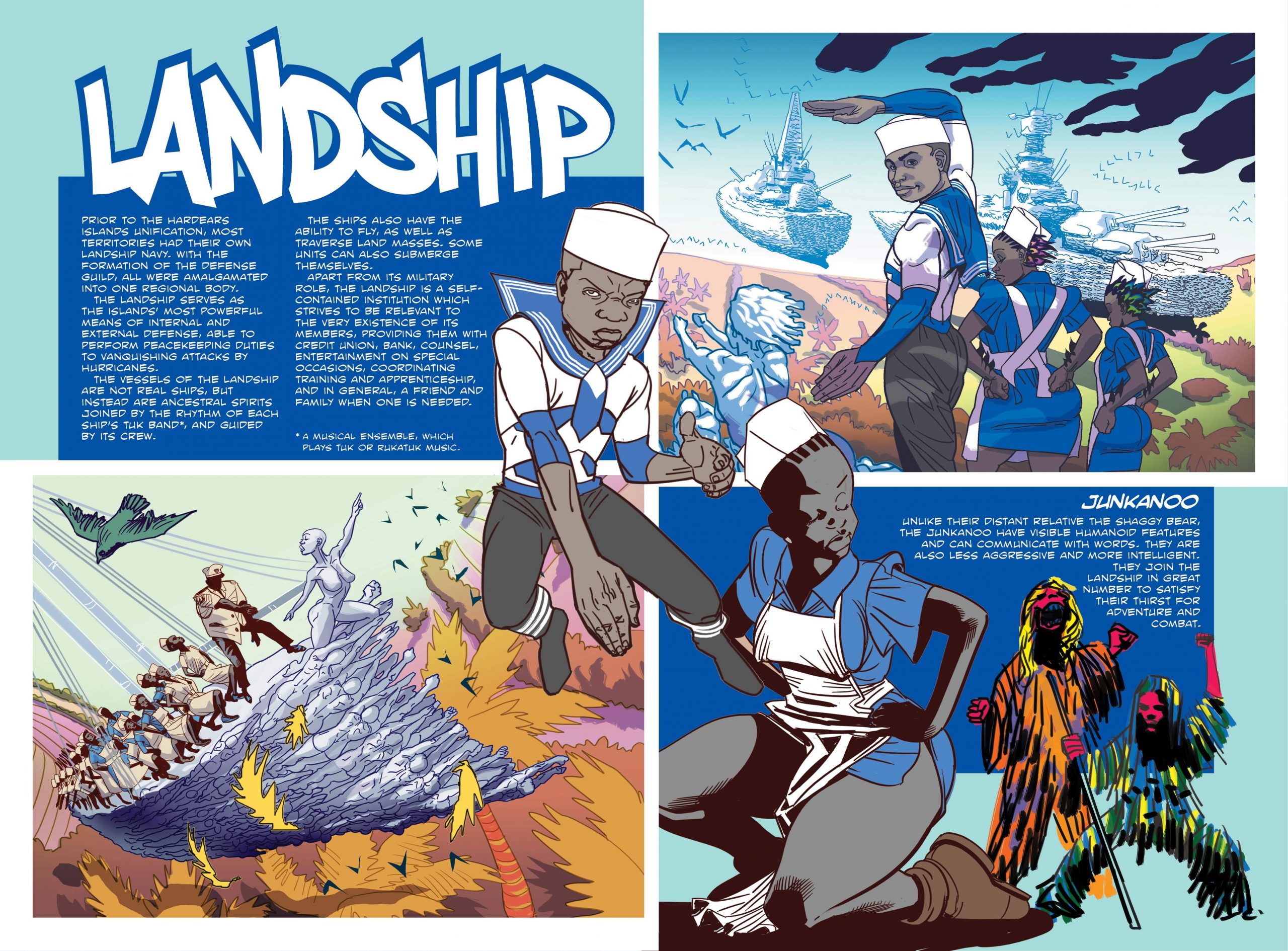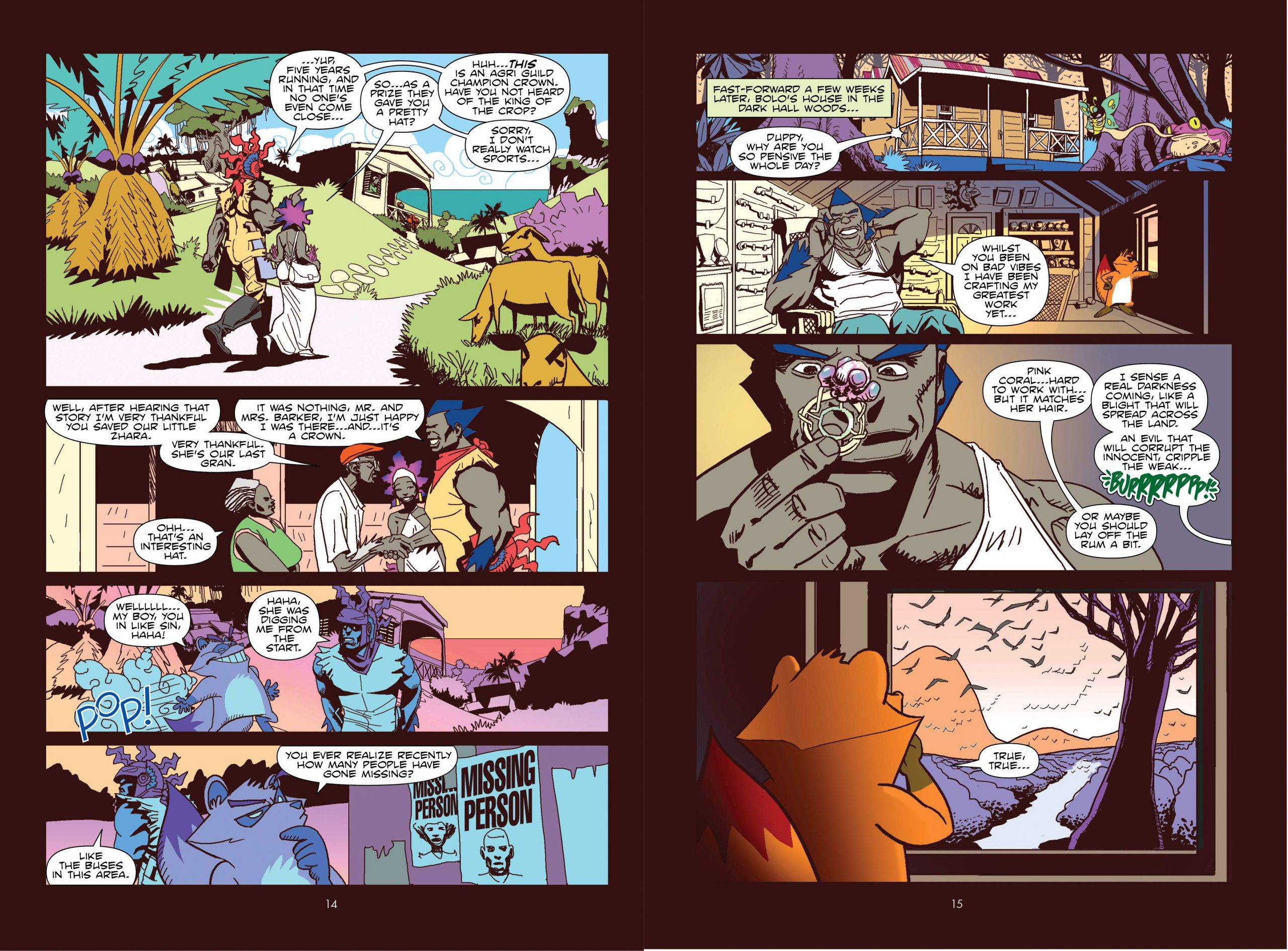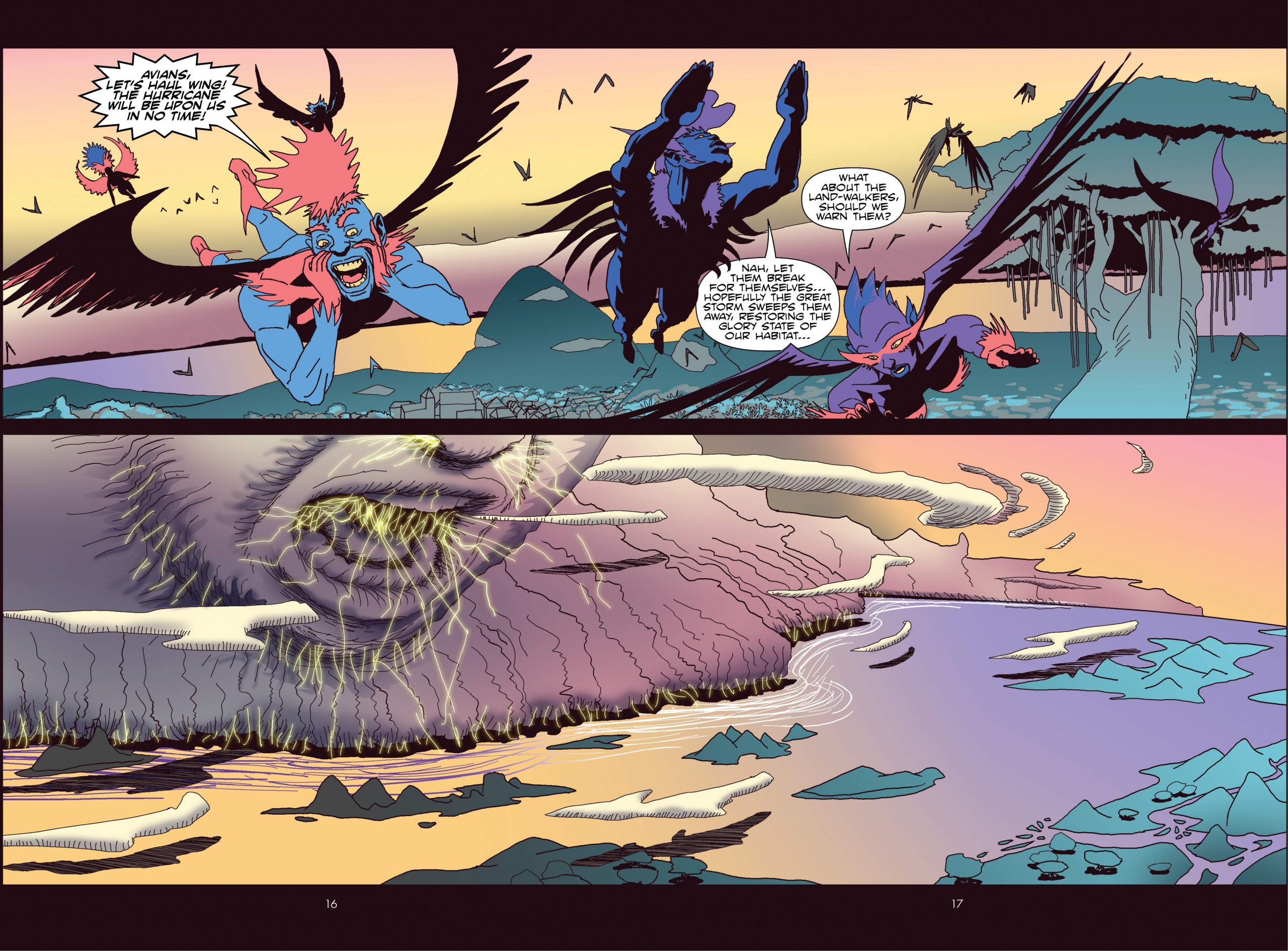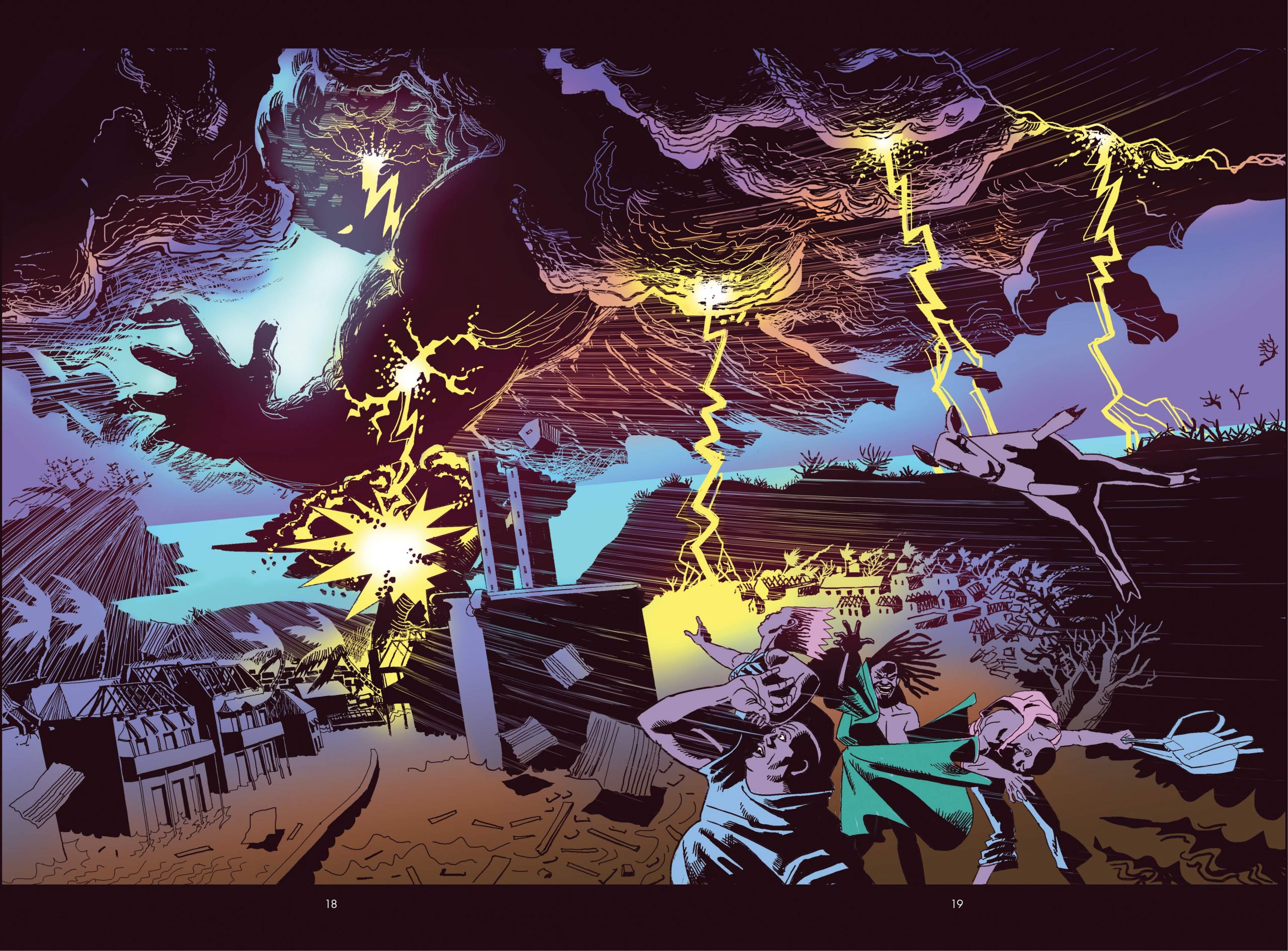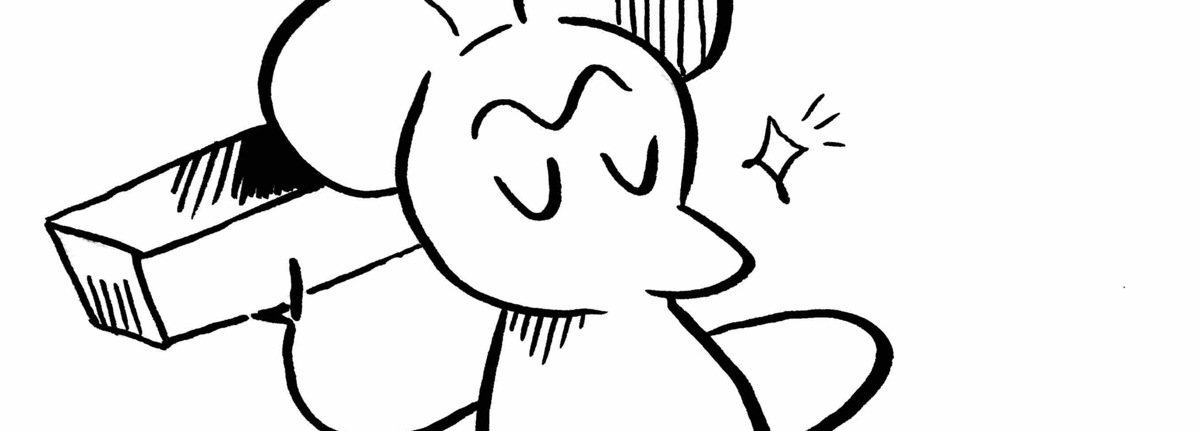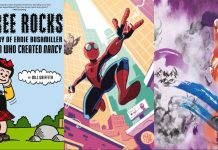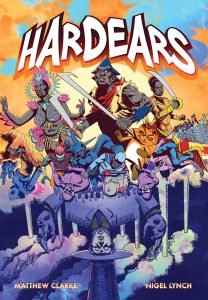
The Beat caught up with creators Clarke and Lynch over email to find out more about how the history and culture of Barbados inspired the graphic novel, what important role is played by the Landships, and how Judge Dredd helped inform the incredible world of Hardears!
KAPLAN: Hardears is inspired by the culture of Barbados, and gives readers a glimpse of a world unlike any other. What was the genesis of this fascinating and singular graphic novel?
HARDEARS: The book started as an allegory for the island’s history of exploitation and resistance, and the remnants of that which still exist today. The complex relationships, tensions, agreements and disagreements between the varying factions and species in the book were influenced by the way the various groups which make up the Caribbean’s diverse melting pot interact with each other. In fact most societies may be able to relate to this in some way.
We also had a desire to preserve this culture and give the world a glimpse of it beyond the sun, sea and sand.
KAPLAN: I am a huge fan of the structure of this graphic novel, especially the way the first dozen pages serve to introduce the reader to the world. Can you tell us a bit about how you arrived at this structure?
HARDEARS: The Barbadian and English speaking Caribbean folklore pantheon, globally, is not well known, so we thought some explanation and context was needed. Even if some of what was highlighted was merely background.
KAPLAN: There are so many fascinating concepts explored in Hardears, but one I found especially interesting was the Landships, which each have a tuk band. Can you tell us about the origin and inspirations behind the Landships?
HARDEARS: The Landships were based on the Barbadian ‘friendly societies’ which performed various rituals in public and private. These rituals are a fusion of West African Dance and British Naval Drills.
The tuk band uses British military instruments to play West African rhythms which would otherwise have been forbidden in early colonial times. The Tuk Band creates the beat that drives the ‘ships’ (each group is called a ship).
Nowadays these groups are cultural entertainment, but originally they had functional roles in the community, serving as credit unions, informal banking and lending and teaching institutions.
In the Hardears universe they are an active military force that defend the inhabitants from threats much like how the real landship defended the poor through charity.
KAPLAN: In the afterword by Cathy Thomas, she discusses how elements of the Crop Over carnival appear in Hardears. Was this influence intentional?
HARDEARS: Yes, Crop Over in Barbados is a national Carnival that traditionally celebrates the end of the Sugar Harvest. It is around the time of this celebration you will see colourful street parades and cultural displays, music, partying and celebration. The Crop Over Costumes influenced a lot of the designs of the characters.
KAPLAN: Also in her afterword, Thomas mentioned the idea of con attendees cosplaying characters from Hardears. Is there any character in particular that you would like to see in cosplay?
HARDEARS: Commander Alissa Lashly when she had on her pirate gear.
Sam Lord the pirate’s older brother John.
KAPLAN: Did any character or other element of the story present a particular challenge during the development of Hardears? Conversely, did any element of the story arrive especially easily?
HARDEARS: Making sure the cultural nuances crossed over a challenge. Knowing the elements was easy but making them translate was the challenge.
KAPLAN: Were there any comics (or any other kinds of stories) that were especially inspirational for you while writing Hardears?
HARDEARS: Growing up reading comics I loved how 2000 AD established the Judge Dredd world using maps, world charts and background chatter. The city was its own character, it felt so alive.
KAPLAN: Is there anything else you’d like me to be sure and include?
HARDEARS: No character in the book is perfect. As Bolo fights for the liberation of his country the guild he is a member of has treated the Avian people badly and destroyed their habitat.
Hardears is available beginning today, Tuesday, May 11th, 2021, at your local bookstore or public library. Let The Beat know if you’re planning on picking it up, either here in the comment section or on social media @comicsbeat!


